No products in the cart.
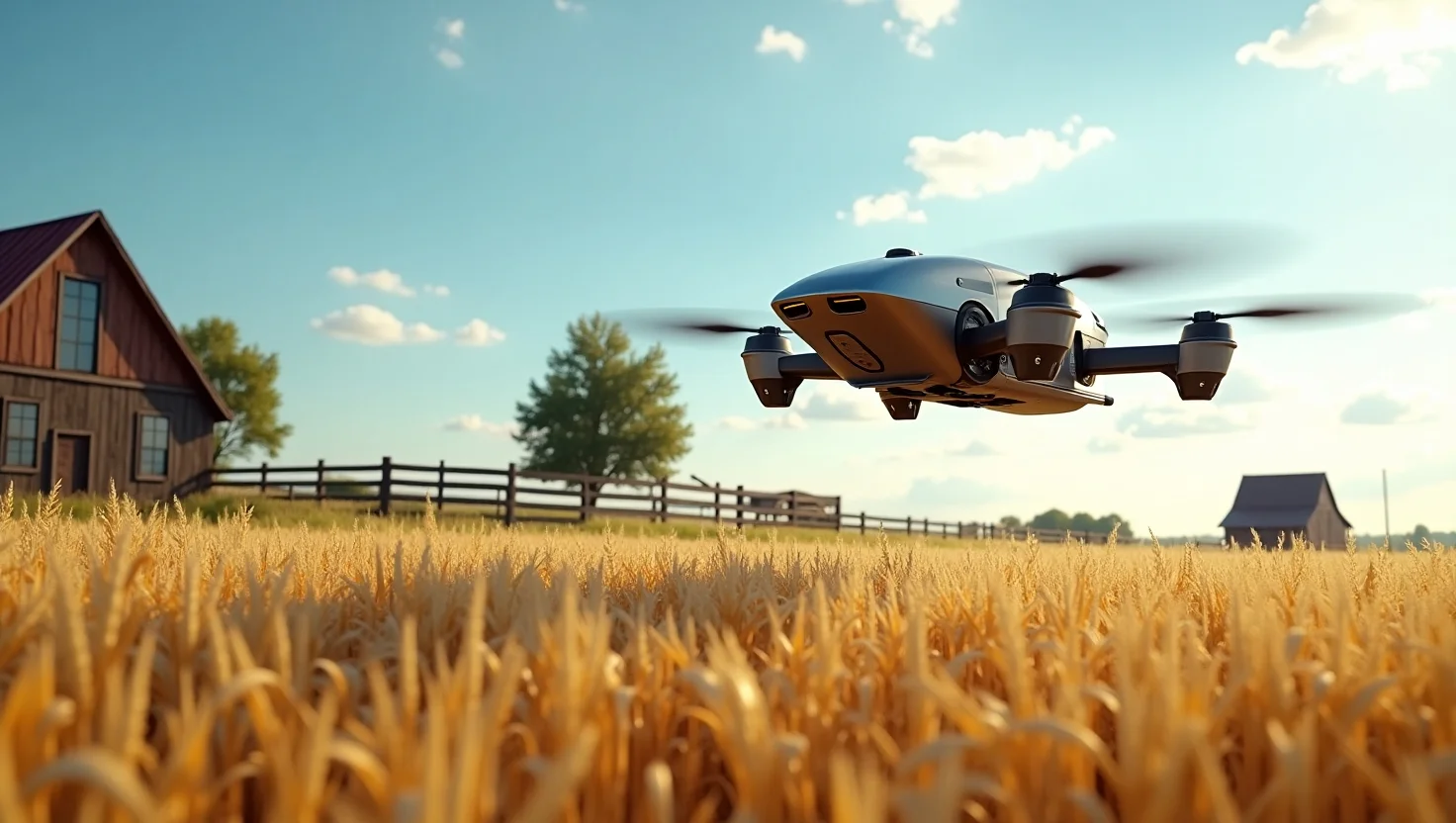
1. Introduction:
Imagine a farm where every decision, whether to irrigate, fertilize, or harvest, is guided not just by intuition but by data-driven insights. This is not a futuristic concept; it’s the present reality for many USA farmlands embracing the power of artificial intelligence (AI). As the agricultural landscape evolves, traditional farming methods are increasingly giving way to AI-driven approaches that maximize efficiency and minimize resource wastage. The shift from data to dirt is reshaping how crops are cultivated, monitored, and harvested.
The USA agricultural sector faces numerous challenges: unpredictable weather patterns, rising operational costs, labor shortages, and the increasing demand for sustainable practices. Traditional methods often fall short in addressing these issues, leading to inconsistent yields and environmental impacts. Farmers are searching for practical solutions that can increase productivity while minimizing costs.
AI technologies are proving to be game-changers. From predictive analytics that forecast crop health to automated irrigation systems that conserve water, AI offers practical solutions to modern farming challenges. However, the adoption of these technologies varies widely, especially among small-scale farmers who may struggle with high initial investments. Moreover, there are concerns about data privacy and the long-term impact on traditional farming jobs.
This article dives into the revolutionary role of AI in transforming US agriculture, examining how data-driven decisions are moving from concept to practical application. We will explore the challenges faced by farmers, the AI solutions addressing these issues, and real-world case studies demonstrating the successful integration of AI into farming practices. Get ready to see how technology is taking the USA’s farmlands from data to dirt.
2. Identifying the Challenges in U.S. Farming
U.S. agriculture has long been the backbone of the nation’s economy, but it faces a multitude of challenges that threaten its sustainability and productivity. Traditional farming methods, while proven over centuries, are increasingly inadequate in the face of modern demands. Factors such as unpredictable weather patterns, labor shortages, resource inefficiency, and the pressing need for sustainable practices put immense pressure on farmers.
One of the most significant challenges is climate variability. Unpredictable weather conditions, including droughts and heavy rains, can drastically affect crop yields. Farmers often struggle to adapt, leading to inconsistent harvests and financial instability. In addition, rising temperatures and changing precipitation patterns increase the risk of pest infestations and soil degradation, further complicating the farming process.
Labor shortages are another persistent issue. The agriculture sector heavily relies on manual labor, but with declining rural populations and stricter immigration policies, many farms face a scarcity of workers. This not only affects planting and harvesting but also routine tasks like monitoring crops and maintaining equipment. Consequently, farmers are forced to either pay higher wages or invest in costly machinery.
Resource inefficiency also hinders productivity. Traditional irrigation methods, for example, often result in water wastage, while indiscriminate pesticide use can harm both the environment and crop quality. Small-scale farmers, in particular, may lack access to advanced tools that can optimize resource use.
Moreover, the push for sustainable agriculture adds complexity. Consumers and policymakers demand eco-friendly practices, yet the transition to sustainable methods often requires significant investment and expertise. Many farmers find it challenging to balance profitability with environmental responsibility.
Addressing these challenges is crucial to ensuring the long-term viability of U.S. agriculture. As we explore in the next section, AI-driven solutions are emerging as a lifeline, offering precision and efficiency that traditional methods cannot match.

3. AI Solutions to Transform USA Farmlands
As challenges in U.S. agriculture intensify, artificial intelligence (AI) emerges as a powerful ally, offering innovative solutions that address productivity, sustainability, and efficiency. By leveraging data-driven insights, farmers can make more informed decisions, reduce waste, and ultimately enhance yields. AI technologies are revolutionizing farmlands across the United States, transforming traditional practices into smart, automated processes.
One of the most impactful applications is predictive analytics. By analyzing historical data and real-time inputs, AI algorithms can forecast crop health, predict pest infestations, and estimate yields. This proactive approach allows farmers to act before issues escalate, reducing crop loss and improving planning accuracy. For instance, AI-powered models can analyze soil health data to recommend the optimal fertilizer mix, minimizing environmental impact while maximizing growth.
Another breakthrough is precision irrigation, where AI systems use weather forecasts, soil moisture levels, and crop needs to automate watering schedules. This reduces water wastage and ensures that plants receive the right amount of hydration at the right time. Additionally, AI-driven drones and sensors are becoming commonplace on farmlands. These devices monitor crop conditions, detect diseases, and even distribute pesticides with remarkable accuracy, cutting down on labor and chemical use.
AI also enhances livestock management. Smart sensors track animal health, monitor feeding patterns, and detect early signs of disease. By analyzing data from wearables, farmers can ensure timely interventions, improving animal welfare and productivity. Moreover, autonomous machinery, like AI-guided tractors, streamlines planting and harvesting, significantly reducing manual labor demands.
Despite the potential, some challenges persist, especially for smaller farms with limited budgets. The initial investment in AI tools can be steep, and there is a learning curve associated with integrating these technologies. Additionally, data privacy remains a concern, as sensitive farm data could be vulnerable to cyber threats.
Nonetheless, the benefits of AI in agriculture are undeniable. By embracing these solutions, U.S. farmers can not only overcome traditional challenges but also future-proof their operations against economic and environmental shifts. In the next section, we will explore real-life success stories of U.S. farms leveraging AI to transform their practices.
4. Case Studies: AI Adoption on U.S. Farms
To truly understand the transformative power of AI in agriculture, it’s essential to look at real-world examples where data-driven innovations have significantly improved farming outcomes. Across the United States, farms of various sizes are leveraging AI to optimize operations, reduce costs, and increase yields. Let’s explore a few notable success stories.
One remarkable case is the Purdue University Smart Farming Project. This initiative focuses on integrating AI with traditional agricultural practices. Using AI-driven drones, Purdue researchers monitor crop health and soil conditions in real time. The drones gather data on plant height, leaf area, and nutrient deficiencies, which is then analyzed through machine learning algorithms. Farmers receive precise recommendations on fertilization and irrigation, which helps conserve resources while boosting crop health. This approach not only reduces manual labor but also enhances yield predictability.
Another inspiring example comes from California’s vineyards, where AI-powered pest management has made a significant difference. Grape growers have long struggled with infestations that can devastate entire harvests. By implementing machine learning models, farmers now predict the likelihood of pest outbreaks based on historical climate data and current conditions. Automated spraying systems then target affected areas only, minimizing chemical usage and protecting surrounding ecosystems. As a result, vineyards report improved grape quality and reduced pesticide costs.
In West Lafayette, Indiana, a local farming cooperative partnered with tech startups to implement smart irrigation systems. By analyzing weather patterns and soil moisture in real time, AI algorithms automatically adjust irrigation schedules. During dry spells, the system conserves water by prioritizing essential crops, while during wet conditions, it prevents overwatering. This adaptive approach has led to a 30% reduction in water use while maintaining optimal plant growth.
Additionally, AI in livestock management has proven transformative on a dairy farm in Wisconsin. The farm utilizes smart collars that monitor cows’ activity, eating habits, and vital signs. When irregularities are detected, farmers receive alerts on their mobile devices, allowing for timely interventions. Early detection of illnesses has improved animal health, reduced veterinary costs, and increased milk production by up to 15%.
These case studies highlight how diverse AI applications are solving specific agricultural challenges across the U.S. By adopting AI technologies, farmers are not just improving efficiency but also making their operations more sustainable and resilient. However, as we look to the future, the scalability of these solutions remains a topic of discussion. In the next section, we will examine the opportunities and obstacles associated with scaling AI across the broader agricultural landscape.
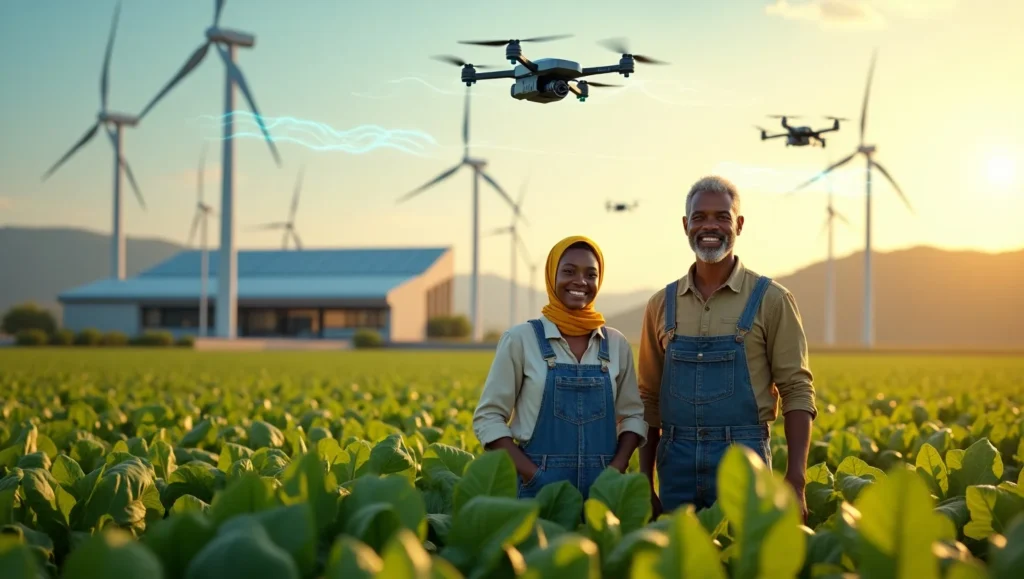
5. The Road Ahead: Scaling AI Across U.S. Agriculture
While AI adoption in U.S. agriculture has shown promising results, scaling these innovations across the entire sector presents significant challenges. Farmers and stakeholders must navigate technical, financial, and social barriers to fully realize AI’s potential in agriculture. Nevertheless, the opportunities for growth and sustainability make this journey worthwhile.
One of the primary challenges is technology accessibility. Advanced AI systems often come with a hefty price tag, making them less attainable for small and mid-sized farms. Unlike large agribusinesses that can afford cutting-edge machinery and software, family-owned farms may struggle to justify the investment. To bridge this gap, government subsidies and public-private partnerships are crucial. Initiatives like grants and low-interest loans specifically aimed at digital farming can help democratize access.
Another significant hurdle is data management and integration. AI systems generate vast amounts of data from drones, sensors, and monitoring devices. Efficiently collecting, storing, and analyzing this data requires robust infrastructure and technical expertise. Many farmers are not equipped with the digital literacy needed to interpret complex data sets. To address this, agricultural tech companies are developing user-friendly interfaces and providing training to help farmers make data-driven decisions without needing advanced technical skills.
Data privacy and security are also major concerns. Farmers worry about who owns the data collected from their fields and how it might be used. Cybersecurity threats, including hacking and data theft, could expose sensitive operational information. Establishing clear regulations and secure data-sharing frameworks is essential to fostering trust and wider adoption.
On the brighter side, AI offers immense scalability potential when effectively implemented. As technology becomes more affordable and accessible, even small-scale farms can leverage AI for tasks like soil analysis, automated irrigation, and yield prediction. Additionally, integrating AI with other technologies, such as the Internet of Things (IoT), can enhance real-time decision-making. For example, AI-powered IoT systems can instantly alert farmers to soil nutrient deficiencies, prompting immediate action.
Collaborative ecosystems between tech innovators, agricultural experts, and farmers can accelerate the scaling process. By working together, stakeholders can develop solutions that are both practical and economically viable. Community-based pilot projects can demonstrate the tangible benefits of AI, encouraging broader adoption.
Scaling AI in U.S. agriculture is not without its challenges, but the potential for increased productivity, resource efficiency, and sustainability makes it a goal worth pursuing. In the final section, we will recap the transformative impact of AI on U.S. farmlands and outline steps for moving forward.
6. Conclusion & Call to Action
As the U.S. agricultural sector faces increasingly complex challenges, the integration of artificial intelligence offers a promising path forward. From precision farming to AI-driven pest management and predictive analytics, these innovations are reshaping the way crops are grown, harvested, and monitored. AI is not just a tool for large agribusinesses; it’s becoming a vital resource for farmers of all sizes, helping to boost efficiency, reduce waste, and ensure sustainability.
Through real-world case studies, we’ve seen how AI technologies are already making a difference on the ground. From Purdue’s AI-powered drones to smart irrigation systems in California, AI is helping farmers make data-driven decisions that improve yields while conserving precious resources. However, as we’ve discussed, challenges such as technology accessibility, data privacy concerns, and the need for scalable solutions remain.
The key to overcoming these obstacles lies in collaboration. As government support increases and more affordable AI tools become available, the opportunity for small and medium-sized farms to adopt these technologies grows. By leveraging AI’s full potential, farmers can future-proof their operations, improve profitability, and contribute to the sustainable future of agriculture.
Call to Action: If you’re a farmer, agri-tech entrepreneur, or policymaker, now is the time to explore how AI can enhance your agricultural practices. Start by researching the technologies that best suit your needs, seeking partnerships that can help you integrate AI into your operations, and advocating for policies that make these innovations more accessible. The future of U.S. agriculture is here; embrace AI to stay ahead of the curve and help shape a more sustainable, productive future for farming.
FAQs:
Q1. How is AI changing farming practices in the U.S.?
AI is transforming U.S. agriculture by enabling farmers to make data-driven decisions through predictive analytics, precision irrigation, and automated pest management. These AI technologies help improve crop yields, reduce waste, and optimize resource use, all while promoting sustainability.
Q2. What are the main benefits of using AI in farming?
The main benefits of AI in farming include increased efficiency, reduced resource waste, improved crop health, and higher yields. AI systems also help farmers predict weather patterns, detect diseases early, and optimize irrigation schedules, which leads to cost savings and more sustainable practices.
Q3. Can small farms afford to implement AI technology?
While the initial investment in AI technology can be high, there are growing opportunities for small and medium-sized farms to access these innovations through government grants, subsidies, and partnerships with agri-tech companies. As AI technology becomes more affordable, smaller farms will be able to benefit from its advantages.
Q4. How does AI help farmers with climate change challenges?
AI helps farmers adapt to climate change by predicting weather patterns, monitoring soil moisture levels, and advising on optimal crop choices. AI-powered systems can also automate irrigation and pest management based on real-time data, reducing the impact of extreme weather conditions on crop production.
5. What are the challenges of adopting AI on U.S. farms?
The main challenges include the high cost of technology, lack of digital literacy among some farmers, data privacy concerns, and the complexity of integrating AI into existing farming systems. Overcoming these barriers will require education, investment, and collaboration between farmers, tech companies, and policymakers.
Related Articles
Livestock Farming
AI in Aquaculture: How Smart Tech is Transforming Fish Farming
1. Introduction: The world’s appetite for seafood is growing fast, yet traditional...
Livestock Farming
The Future of Farming: Why AI-Powered Tractors Are Gaining Popularity
1. Introduction: Across the world, farmers are grappling with rising costs, shrinking...
Livestock Farming
Using AI to Track Livestock Health and Prevent Disease Outbreaks
1. Introduction: In recent years, livestock farmers around the world have faced...
Livestock Farming
How Machine Learning Is Changing Fertilizer Application on Farms
1. Introduction: For decades, farmers have applied fertilizer using general formulas, blanket...
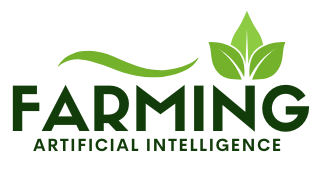
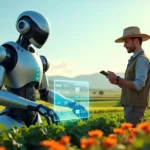
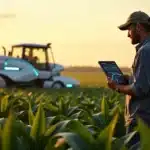
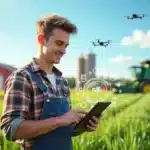




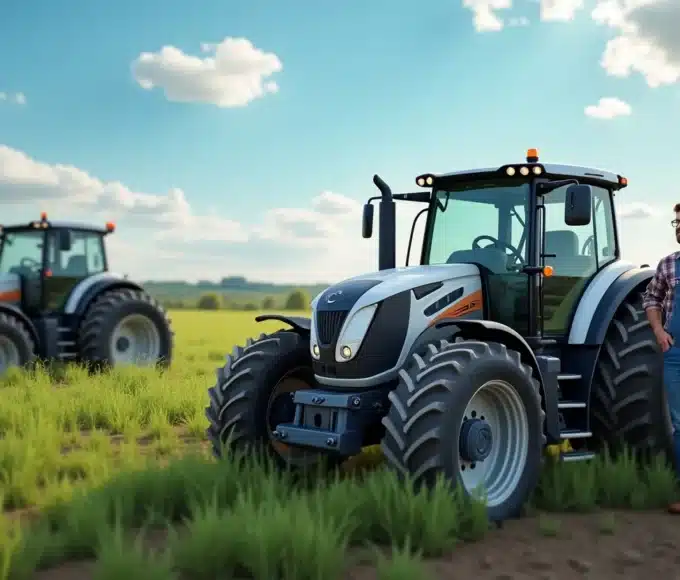
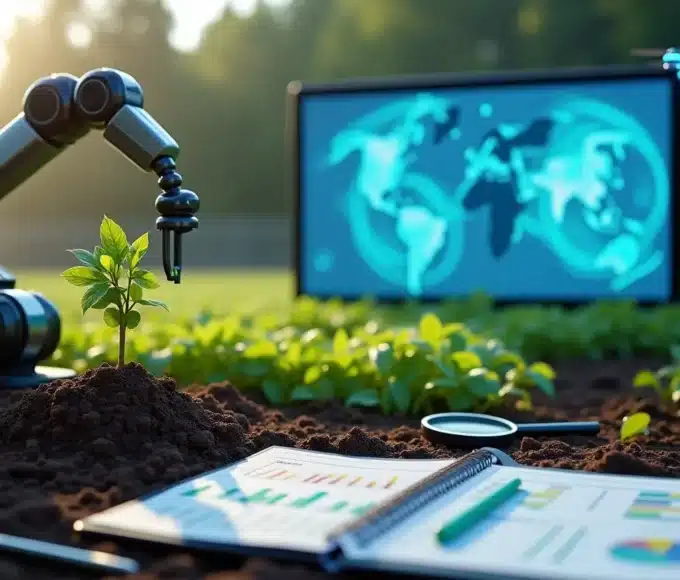
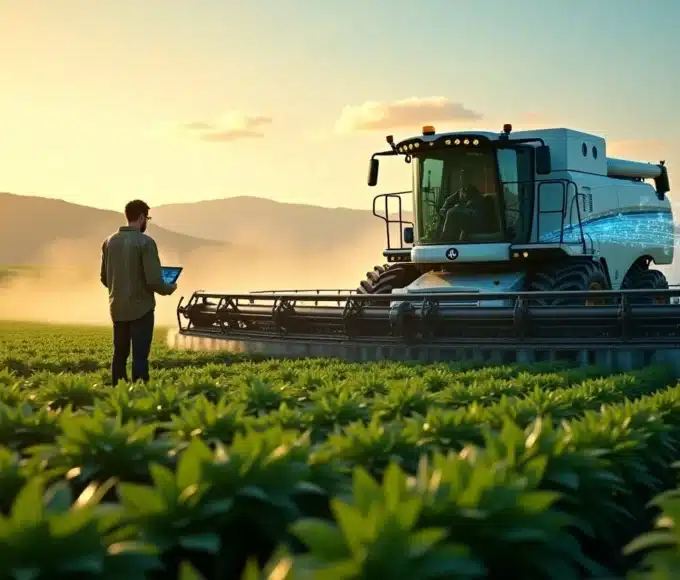
Leave a comment